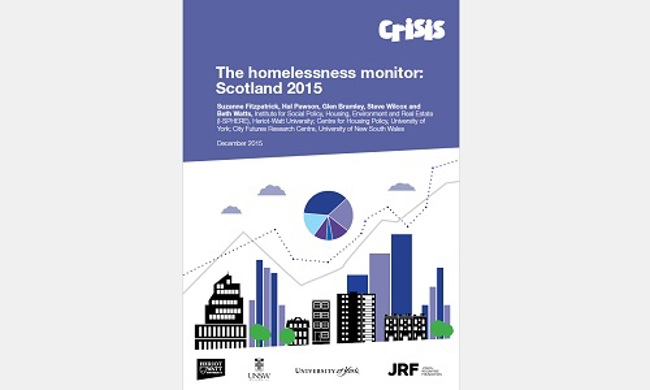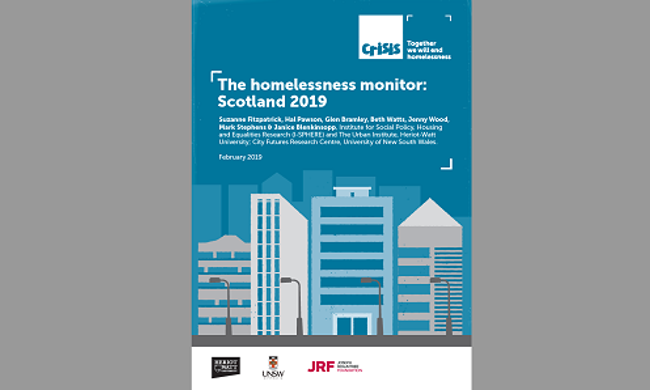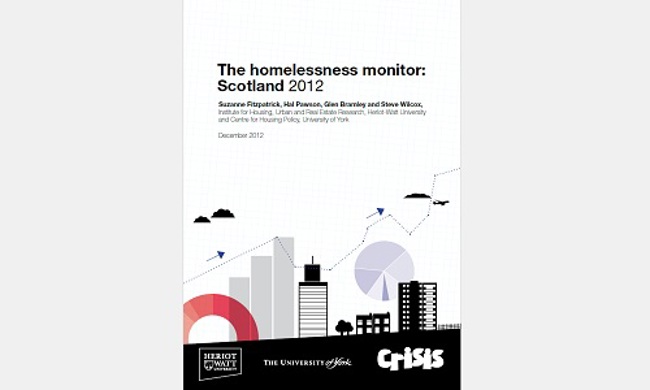The Homelessness Monitor: Scotland 2015
27.03.2015
The Homelessness Monitor: Scotland 2015 is the second annual report of an independent study, funded by Crisis and the Joseph Rowntree Foundation, of the homelessness impacts of recent economic and policy developments in Scotland.
Key findings
- Since its peak in 2005/06 statutory homelessness in Scotland has been on a downward trend over the past five years. In 2014/15 Scottish local authorities logged 35,764 statutory homelessness applications, of which 28,615 were assessed as homeless. The total number of applications has fallen by 37% since 2009/10. This downward trend is wholly the result of the introduction of the ‘Housing Options’ model of homelessness prevention from 2010 onwards.
- Since 2010/11 temporary accommodation has remained at between 10-11,000 households at any one time. Most temporary accommodation placements in Scotland are in social housing stock, though single person households are more likely than families to be placed in B&B’s.
- Scotland has generally followed UK trends in terms of indicators for the numbers of hidden homeless. Overcrowding has increased in Scotland, to a level more similar to the rest of the UK and seems to be strongly related to poverty.
- Housing supply fell to historically low levels during the recession, and annual additions to the housing stock now need to rise by some 30% from 2013/14 levels just to keep pace with household growth.
- While the private rented sector doubled in size over the decade to 2013, and now accounts for 15% of all housing stock, it still provides less than two thirds of the number of rented dwellings available in the social rented sector in Scotland.
- This is a time of continuing policy development on homelessness in Scotland, with a particular focus on youth homelessness and ‘multiple exclusion homelessness’.
- The Scottish Government, as part of the post referendum constitutional settlement, is to be provided with some limited new powers on the operation of welfare policies in Scotland. They have stated that these will be used for the effective ‘abolition’ of the ‘social sector Housing Benefit size criteria’ (commonly known as the ‘Bedroom Tax’) in Scotland, and the continuation of direct payments to social landlords of Universal Credit elements related to rental costs.
- According to the Scottish Household Survey, about 50,000 adults (1.1% of the adult population) experience homelessness each year. Rough sleeping is experienced by around 5,000 adults in Scotland each year, with about 660 sleeping rough on a typical night, the overwhelming majority of them men. This national survey data confirms the key role of household-level poverty in the generation of homelessness, exacerbated to some degree by local housing and labour market conditions.
Research
Fitzpatrick, S., Pawson, H., Bramely, G., Wilcox, S. & Watts, B. (2015) The Homelessness Monitor: Scotland 2015. London: Crisis.




